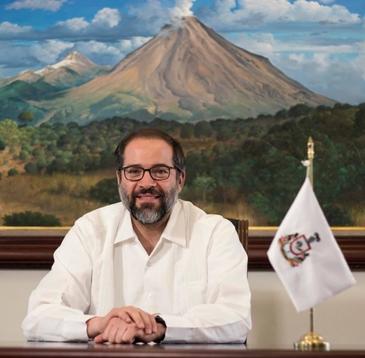Colima is one of 16 Mexican states in the Under2 Coalition committed to taking bold climate action to keep the global temperature rise well below 2°C.
In 2016 and 2017, we launched an ambitious plan to increase carbon sinks (reservoirs which stores carbon chemicals from the atmosphere, such as forests or mangroves) by planting more than 72,000 trees, introduce new mitigation and adaptation legislation, and to implement clean transport. Our state GHG emissions inventory supports us to plan and coordinate these policies.
The importance of updating our GHG inventory
GHG emissions are the leading cause of global warming. Tracking emissions is an essential step to understand how to reduce them as fast and efficiently as possible to avoid catastrophic global warming. Without an accurate inventory of GHG emissions, we would not have the insight required to make informed decisions on policies to cut emissions.
The process
We worked in partnership with a specialist consultancy to lead the research, gather data and produce the final report. The inventory was developed following the IPCC 2006 guidelines for National Greenhouse Gas Inventories, which sets out the types of greenhouse gases covered, as well as the sectors and categories that need to be considered. The consultancy was able to analyze which sectors of our economy are the most polluting. The results showed the energy sector contributed 83% our GHG emissions, the land-use sector 10%, and industrial processes and land use 4%. For that, we will use emission estimations to update our state climate action and inform actionable mitigation opportunities in the coming years.
Challenges faced
We had to improve the accuracy of the inventory, also called the tier of reporting, which represents the level of methodological complexity (tier 1 is the basic method, tier 2 intermediate and tier 3 more demanding and accurate). For that matter, we managed to do this for four distinct categories, including Agriculture, Forestry and Other Land Use (AFOLU), the energy sector, the forest inventory, and the subsectors of transport.
The challenge was to obtain more information on the activity data and improve the emission factors within a six-month time frame. In this regard, we had to coordinate the collection of information between different stakeholders (organizations and agencies), a process that is sometimes not supported by local legislation and can be challenging, or even impossible. This explains that our uncertainty assessment (which provides practical guidance for estimating and combining uncertainties) sometimes lacks accuracy and precision, even if, overall, it was calculated more accurately than before.
The long term impacts
Through this project, we have been able to equip ourselves to make more informed decisions on plans for cutting emissions. The results have been summarized and shared through a report (in English and in Spanish) and a webinar with other members of the Under2 Coalition. This data will also support us to demonstrate our contribution to Mexico’s national target. Our inventory will now be updated on a regular basis, which will allow the monitoring of GHG emissions to measure our progress more effectively. Overall, the update of our inventory is part of a bigger picture of states and regions leading the way on taking ambitious climate action.
